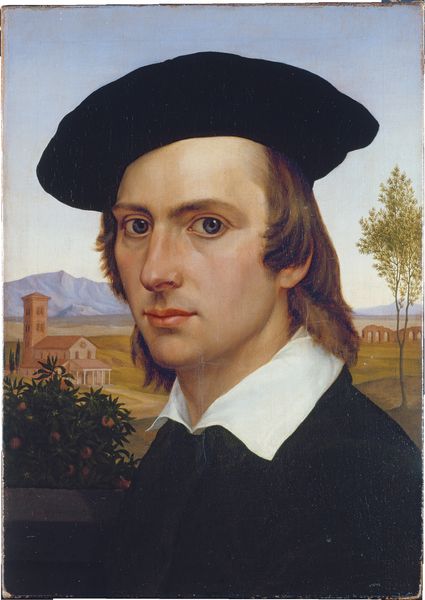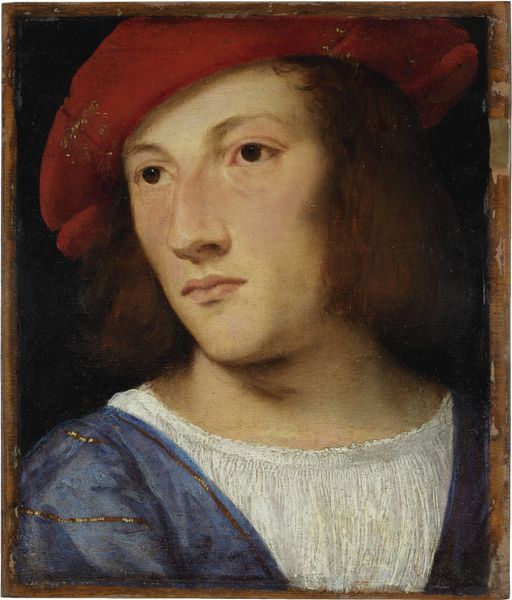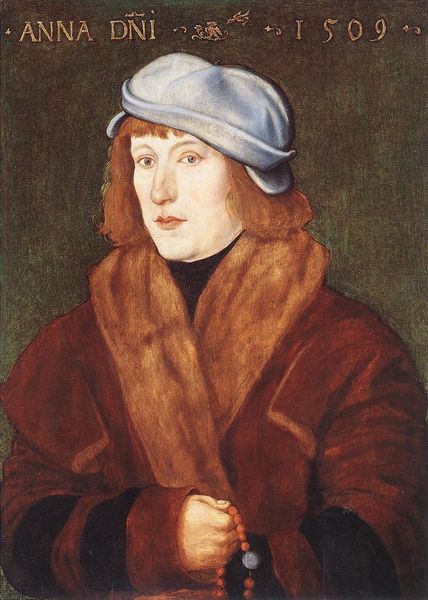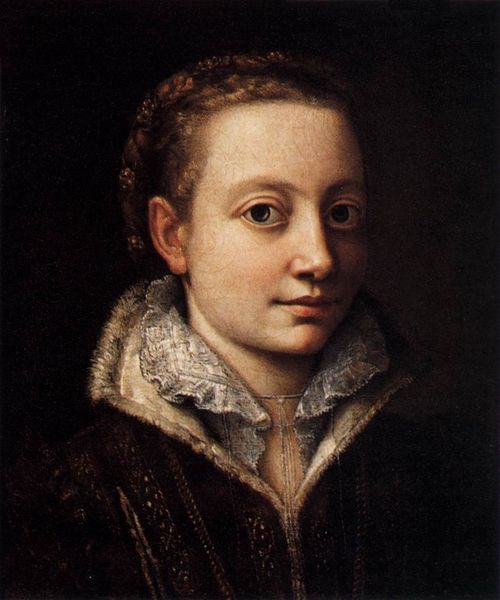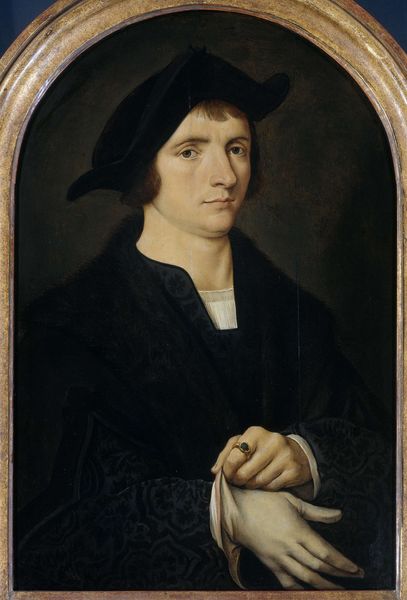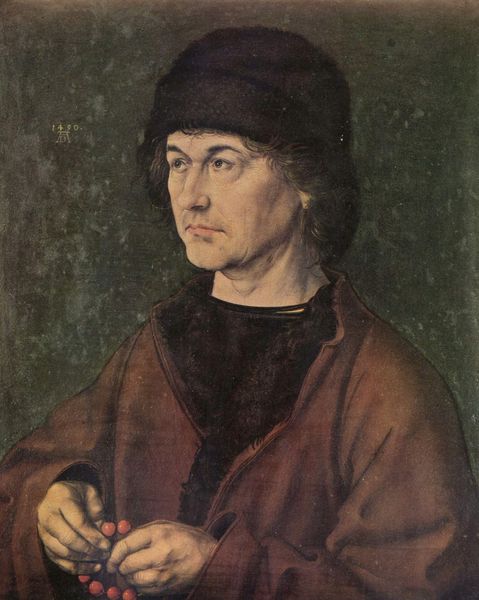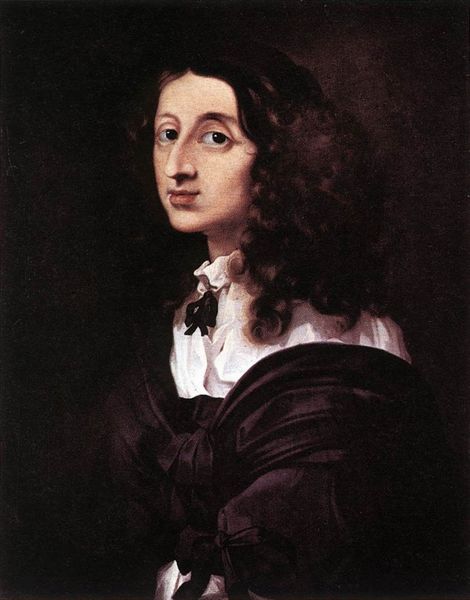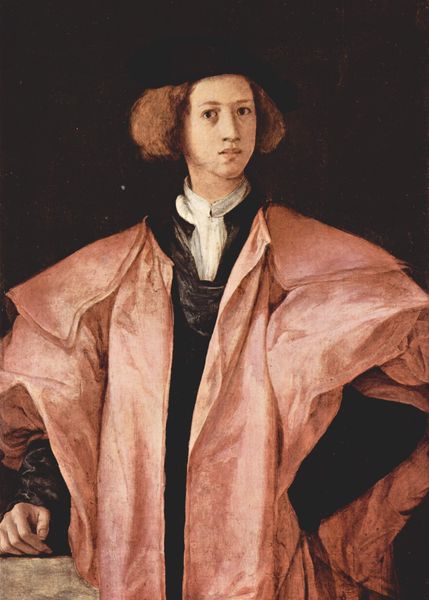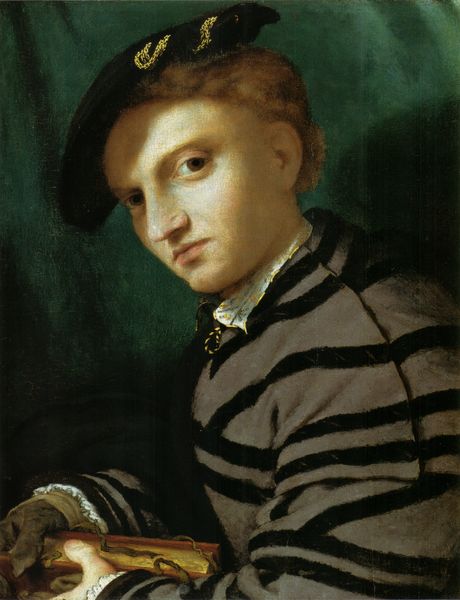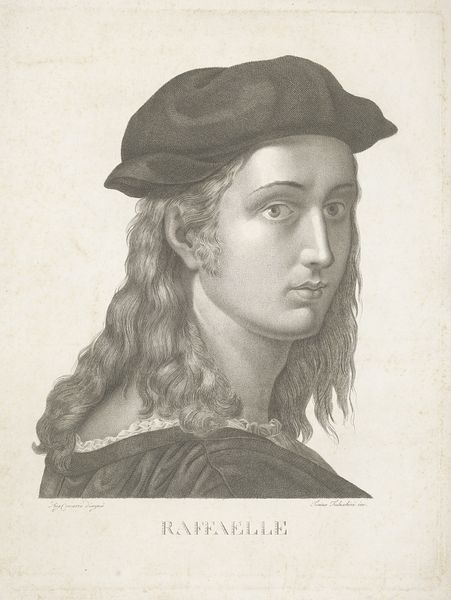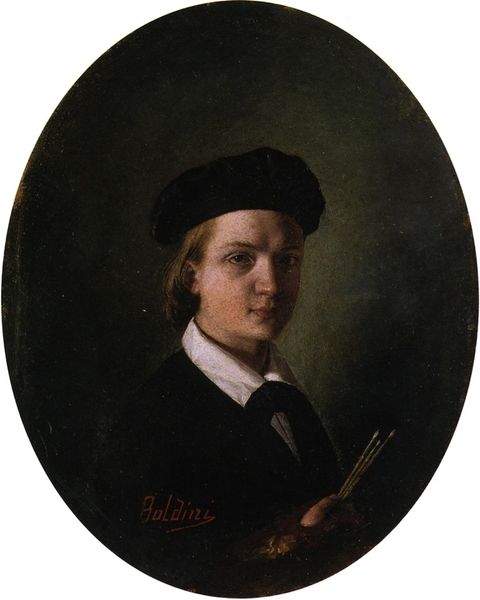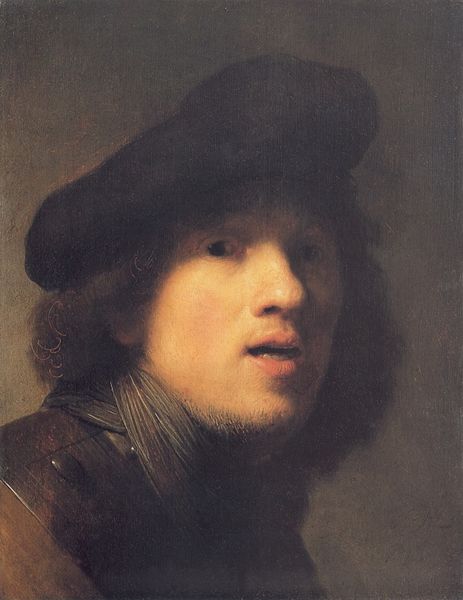
painting, oil-paint
#
portrait
#
self-portrait
#
painting
#
oil-paint
#
mannerism
#
figuration
Dimensions: 59 x 44 cm
Copyright: Public domain
Curator: Here we have Parmigianino's "Portrait of a Young Man," painted in 1525. It's currently held at The Louvre in Paris. What's your first impression? Editor: Melancholy, definitely. The muted tones and that wistful gaze, it feels like gazing into a soul in quiet contemplation. He’s almost too pretty, isn’t he? Like a Renaissance pop star posing for a magazine cover. Curator: You've hit on something. Parmigianino was a key figure in Mannerism, and that comes through in the idealized, almost androgynous features. Think about the pose, too. It's not just a portrait; it suggests introspection, perhaps even a subtle commentary on beauty and the self. Editor: Right, the hand cradling the face, that's a classical trope, isn't it? Almost like he’s echoing the pose of Melancholia—as in, Albrecht Dürer's famous engraving. Except, this young man looks more… bored? Perhaps that is the ultimate suffering. Curator: Interesting. The symbol of melancholy was reinterpreted again and again by different generations of artists. Perhaps Parmigianino is saying that the youth have more luxury to feel bored, and the older generations suffer and ponder the real human suffering. I suspect that the artist, too, used a reflection to assist his draft. Editor: Absolutely. The glassy quality, the light just so... there’s a mirrored, almost surreal, feeling to it. In psychoanalytic terms, you could almost see it as a double - a portrait of himself but also his ego and id clashing or seeking an alliance. And look closer; that almost perfect rendering of form. No wonder the painting feels uncanny. Curator: That attention to detail elevates it beyond a simple portrait. The soft modeling of the face and the delicate textures of his clothing are exquisite, aren’t they? Editor: Yes. Ultimately, I see it as a meditation on the ephemerality of beauty and perhaps the first sparks of self-awareness— a painted version of early consciousness. Curator: A very insightful reading. It reminds us that even a 500-year-old portrait can still hold a mirror to our own modern sensibilities.
Comments
No comments
Be the first to comment and join the conversation on the ultimate creative platform.
